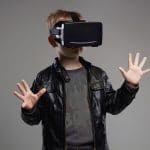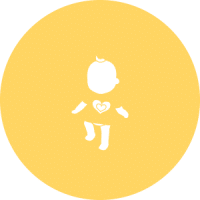
Importance of regular eye checks
It is recommended that you have an eye examination once every two years unless advised otherwise by your optometrist. An eye examination will not only detect problems with your vision but it can also uncover a number of other underlying health problems. An eye examination really is an essential healthcheck and helps to keep you and your eyes healthy.
The importance of regular eye examinations
Ask yourself three questions about the state of your eyes.
Why examine the eyes?
Routine eye examinations are an important part of maintaining healthy eyes and preventing potential eye diseases from developing. Some eye diseases do not cause symptoms and therefore it can be difficult for patients to realise they have a problem.
What can eye examinations find?
Eye examinations can detect eye diseases that develop, sometimes unnoticeably and without vision problems. Such common diseases that develop without symptoms include lazy eyes (common in children) and glaucoma in adults. Unfortunately, in most cases patients are unaware they have glaucoma until it is found in the later phases.
Who should get examined?
The recommendation is that any child should have an eye examination at around two and half to three years of age, even if there is no family history of eye disease. All adults should have a check up at the age of forty and then on a regular basis. Some people shouldn’t wait until they are 40 to have a comprehensive eye exam. If you have an eye disease or if you have a risk factor for developing one, such as myopia (short sightless), diabetes, high blood pressure or a family history of eye disease, you should see an ophthalmologist even if you are younger than 40. As you age, it’s especially important that you have your eyes checked regularly because your risk for eye disease increases. If you are 65 or older, make sure you have your eyes checked every year or two for detecting signs of the most common age-related eye diseases such as cataracts, age-related macular degeneration and glaucoma.
What Should Be Checked in an Eye Exam?
A comprehensive eye exam is relatively simple and comfortable and shouldn’t take more than 45 to 90 minutes. The exam should include checks on the following:
- Your medical history.
- Your visual acuity.
- Your pupils.
- Your side vision.
- Your eye movement.
- Your prescription for corrective lenses.
- Your eye pressure.
- The front part of your eye.
- Your retina and optic nerve
Five good reasons to test your children’s eyes
Eye tests for children are quick, simple and painless and can help prevent serious problems in later children or in adulthood. Your local optician can test your eyesight but for a complete eye health check, visit your ophthalmologist (eye doctor) – a specially trained professional who can give your child the all-clear.
Does my child need an eye test?
The answer is very simple; yes!
Every child between 4 1/2 and 5 1/2 years of age should have an eye test (this is sometimes done in schools by the nurse but if your children have not had a test at school then parents should make separate arrangements).
For some children, the need for an eye test may be more urgent, for example any child who develops a squint (turn) in the eye or any child with a droopy eyelid should have an eye test when the problem is noticed. Any child with a close relative who has a squint or lazy eye should be examined when they are about 3 years old.
Other common symptoms of eye problems in children include headaches – your child should have an eye test because headaches can be caused by long-sight, unbalanced eye muscles and by inflammation in the eye.
Five good reasons…..
1. Eye problems in children are relatively common – one of the most common eye problems is amblyopia (also known as lazy eye) which happens in up to 5% of all children. Amblyopia can be caused by a squint (crossed eye) in which case the squint will generally be visible but it can also be caused by problems which are invisible to family members. Other problems include conjunctivitis, blocked tear ducts, droopy eyelids, eyelid cysts and allergies.
2. Eye problems run in families – some eye problems like squint (crossed eyes), amblyopia (lazy eye) long sight and short sight do commonly run in families. If a parent, sibling or cousin has one of these problems, a child should have an eye test with an experienced eye doctor – ideally by about three years of age. If there is a rarer genetic disease in the family, such as retinoblastoma or congenital cataract, then children should be examined as babies by an eye doctor.
3. Small children who are born with poor vision cannot tell you their vision is poor – it’s a simple fact that children can be unaware that they have a problem and that others have better vision. Of course, if your child tells you they can’t see very well, then an eye test is clearly needed.
4. Children may be having difficulty at school – A variety of eye problems can give children difficulty with their school work. Uncorrected long sight (hypermetropia) or eye muscle balance problems may make reading physically tiring and put children off their studies. Myopia or astigmatism may make it difficult for them to see the whiteboard or see what people are doing the other side of the classroom.
5. Most causes of poor vision are easily correctable if they are picked up and treated on time – The human brain is learning to see, from birth until about 7 1/2 years of age and so checking the eyes during this time is important. For example, if there is a problem with one eye that blurs the vision then the part of the brain that processes vision from that eye will not develop properly and instead the brain devotes all its efforts to the other eye. This is called amblyopia or lazy eye. Treatment of lazy eye works better in younger children but is fairly unlikely to work after the age of 7 1/2.
Who does the eye test? The 3 Os – Ophthalmologist, Orthoptist or Optometrist- do you know the difference?
It’s time to get your eyes checked, so let’s visit the eye doctor. Some of us may have wondered exactly what it means to have an eye examination and who actually performs it. Many of us believe there is a single specialist who does it all, examines our eyes for problems, prescribes glasses/contact lenses and performs surgery, if needed. Contrary to popular belief, there are specialist eye physicians who perform different roles when it comes to eye care. Orthoptic, optometric and ophthalmic eye examinations are each used for different purposes depending on the patient case. So, who does what, when it comes to examinations?
Patients who need to have a vision test or have glasses/contact lenses fitted to correct their vision, go to a specialist optometrist. An optometrist is a health care professional who is licensed to provide primary eye care services. They examine for and diagnose vision defects such as nearsightedness, farsightedness, astigmatism (blurred vision), and presbyopia (reduced ability to focus on close objects) among other possible problems. During an optometric examination, vision abnormalities can be found. So, optometrists can recommend treatments for patients including prescriptions for eyeglasses, contact lenses, low vision aids, medications or a referral to an ophthalmologist for advanced medical, surgical or laser treatment. The optometrist can also perform minor surgeries such as removing a foreign object from the eye.
Patients who need further specialist treatments for their eyes go to an ophthalmologist. An Ophthalmologist is a medical doctor who specializes in the medical and surgical care of the eyes, visual system and in the prevention of eye disease and injury. They provide the full range of care including routine eye examinations, diagnosis and medical treatment of eye disorders and diseases, including prescriptions for eyeglasses, surgery, and management of eye problems that are caused by illness. An ophthalmic eye examination might include history (general, family, medications, allergies, etc), examination of the vision acuity (clarity and sharpness), physical examination, and focimetry (assessment of spectacles) depending on the patient case. In addition, an ophthalmologist can specialize in specific areas of eye care such as glaucoma, cornea, oculoplastic (abnormalities which mainly affect the function , the diseases and the aesthetic of the lids), pediatric ophthalmology (genetic abnormalities including crossed eyes and lazy eyes), and diseases that affect the retina – a tissue that lines the inner surface of the eye.
Little ones who need to see an eye specialist will initially go to an orthoptist – a health professional who specializes in eye movement problems and disorders that affect how the eyes work together. These conditions are typically diagnosed in childhood; so orthoptists are highly experienced in examining children of all ages and they play a central role in the evaluation and treatment of childhood eye disorders. It’s the orthoptist who comes to school to do the vision screening of pupils. In an orthoptic examination, an orthoptist will perform an assessment which includes checking for vision clarity (20/20, 20/40 vision, etc), whether eyes are functioning and moving together and detecting any abnormal conditions such as lazy eye. Orthoptists are not medical doctors but are highly skilled specialists.
Patients who go to an optometrist to be checked for glasses; an orthoptist to examine a lazy eye; or an ophthalmologist to perform laser eye surgery, all have one thing in common. They benefit from a team of eye care specialists that works closely together to help maintain good eye health and provide skilled diagnosis and treatment when needed.










